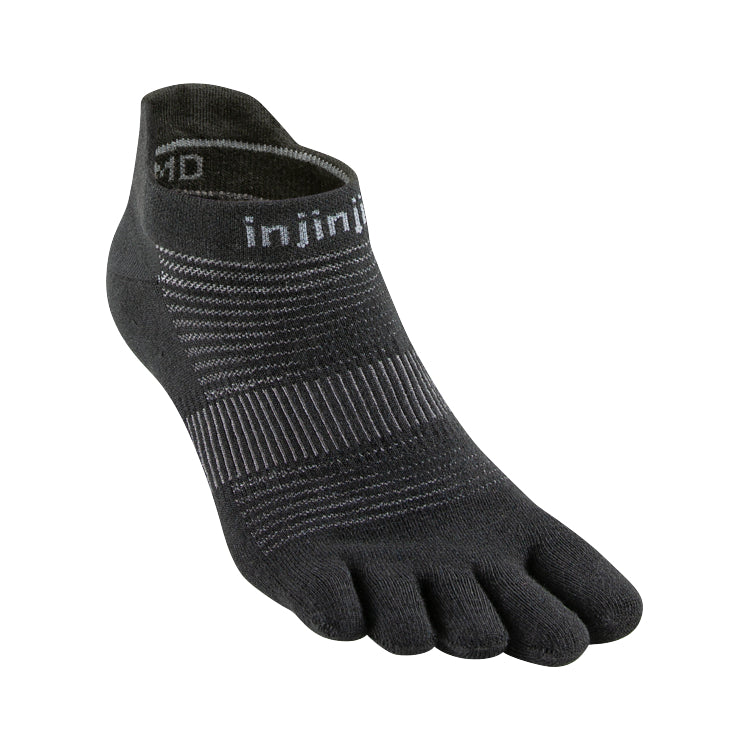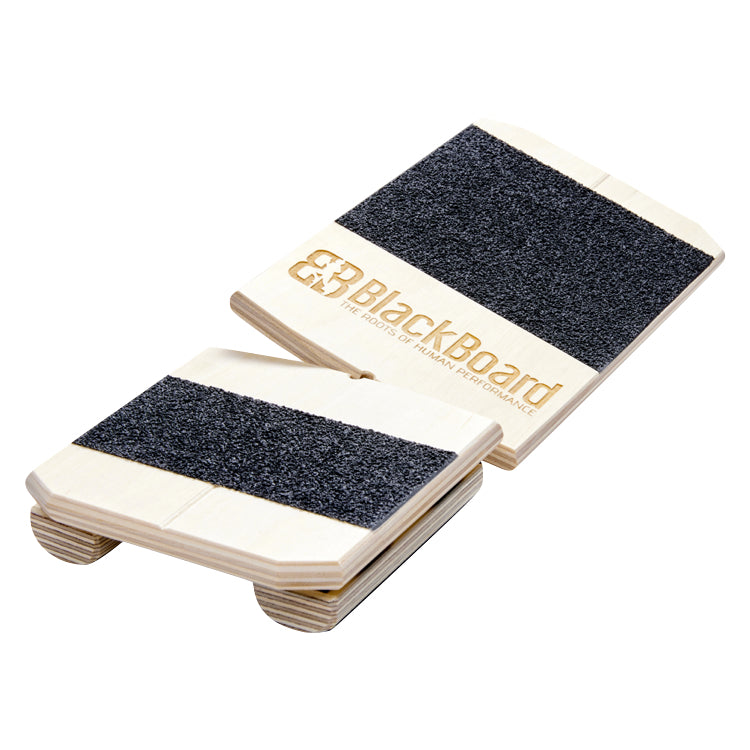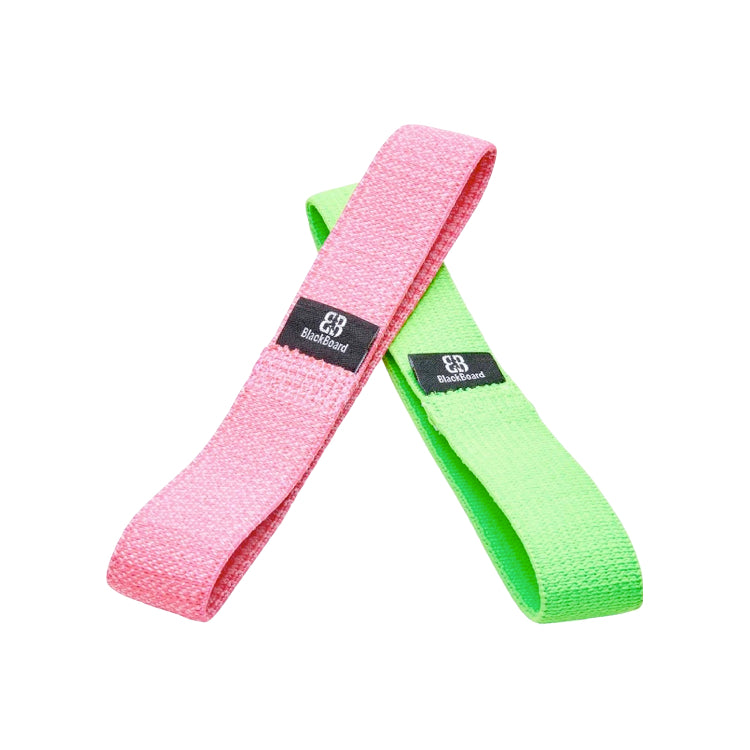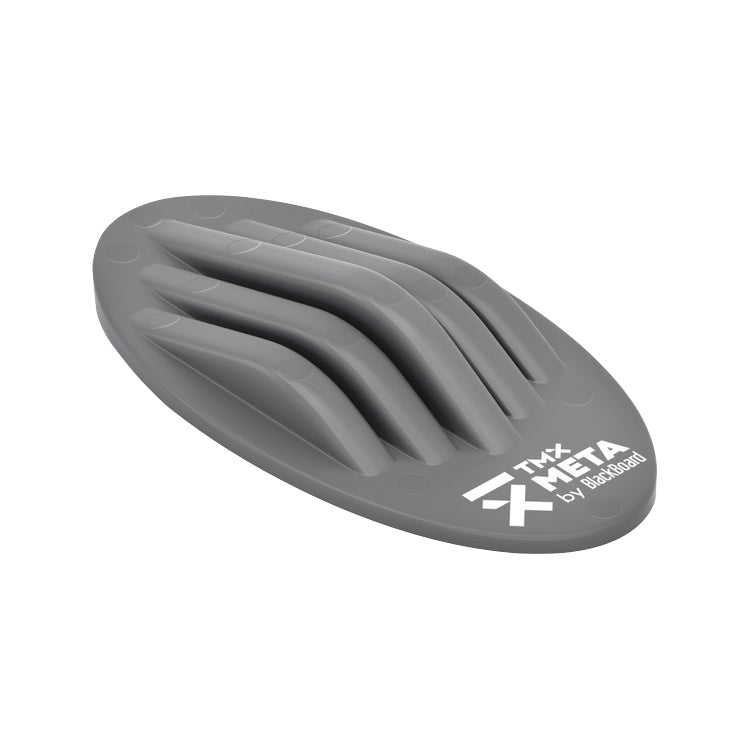
Foot pain can be caused by numerous factors, so there is no one exercise regimen that will address all possible causes of foot pain. However, in our experience, we’ve found that the following exercises can help rehabilitate the foot by improving its function, which in turn may reduce pain or discomfort, especially when these exercises are performed in combination with other therapies suggested by your healthcare provider.
Here are a few exercises that may be helpful for folks with foot pain:
-
Big Toe Stretch: The tapering toe boxes of conventional footwear squeeze the toes together and deform the big toe (as well as the other toes) over time. The Big Toe Stretch is intended to combat this problem and is helpful in reducing bunions, improving foot and toe circulation, relieving plantar fasciosis pain, strengthening the medial longitudinal arch (i.e., the main foot arch), and improving general weight distribution, gait, and balance. The Big Toe Stretch is designed to move the first toe into a more abducted position, or a position farther away from the foot’s midline. Gently pull your big toe away from your other toes while applying counter-pressure on the inside aspect of your first metatarsophalangeal (MTP) joint (i.e., at the base of your big toe). This exercise can be performed multiple times each day. Click here for a video demonstrating proper Big Toe Stretch technique.
-
Toe Extensor Stretch: Conventional footwear usually possesses built-in toe spring, a design element that manufacturers claim improves forward propulsion. Excessive toe spring is actually a harmful feature—especially in running shoes and in thick- and rigidly-soled footwear—and promotes chronic tightness in the long extensor muscles that run from the front of the lower leg across the ankle and attach to the tops of the toes (Note: Heel elevation is another design element in most footwear that also contributes to muscle imbalances in the foot and lower leg). Reduce tightness in the toe extensors by sitting on a chair or stool and placing one leg underneath you with the tops of your toes curled under and resting on the floor. Gently press your ankle forward and slightly downward to create a light stretch in your toe extensor muscles and tendons. You should feel the stretch in the front of your shin and ankle and on the top of your foot. Hold this stretch for 30 seconds to one minute, then switch to your other foot. To increase efficiency, stretch both feet at the same time. Click here for a video demonstrating proper Toe Extensor Stretch technique.
-
Massage Ball Rolling: Consider using a studded ball to massage the tissues on the underside of your foot. This is an easy and cost-effective way to reduce pain, particularly pain that’s associated with plantar fasciosis. Gently place the sole of your foot on a massage ball and then roll your foot forward, backward, and side to side to stimulate blood flow to your plantar fascia and help break up any necrotic (i.e., dead) tissue. You can use larger, softer balls if your feet are hurting a lot; use smaller, harder balls to get more focused pressure. This is a great exercise to perform throughout the day, especially if you work in an environment where removing your shoes (either temporarily or for a good portion of the workday) is feasible. In our experience, we’ve found it helpful to do massage ball rolling on a daily basis. Click here for a video demonstrating proper Massage Ball Rolling technique (as well as other ways to keep your feet healthy throughout the day).
-
“Short Foot” Exercise: The Short Foot Exercise is a sensory-motor training activity intended to help increase proprioceptive outflow, which is important for maintaining balance or rehabilitating the foot following injury. Perform the Short Foot Exercise by standing and placing your feet about shoulder-width apart. Shift your weight slightly to the outer edge of the foot you'd like to work on. Keeping your toes straight and splayed as wide as possible, gradually increase the amount of space under the sole of your foot, especially under your medial longitudinal arch (i.e., the arch that runs from your heel to the base of your big toe, on the inside edge of your foot). As you contract the muscles on the bottom of your foot to create your “short foot,” resist the temptation to curl your toes. To help you envision the proper execution of this exercise, imagine yourself picking up a ball using only the muscles in the arch area on the bottom of your foot, not your toes. Wearing Correct Toes toe spacers while performing this exercise can also be helpful. Click here for a video demonstrating proper Short Foot Exercise technique.
In addition to the above, there are a number of exercises you can perform using BlackBoard training tools—including the BlackBoard Basic, ToeBands, and Meta Trigger—to help reduce pain, improve foot strength and stability, and enhance joint range of motion throughout the foot. You can find other helpful stretches and exercises for reducing foot pain and rehabilitating the feet and toes on this page.

WANT TO IMPROVE YOUR FOOT HEALTH?
Let the team at Natural Footgear help you! Subscribe to our newsletter for the latest offers and helpful info, and sign up for our FREE email courses on various topics and foot health conditions.
Sign Up →
Want to Improve Your Foot Health?
We are here to help you every step of the way. Get our newsletter for the latest offers and helpful info, and sign up for our FREE email courses on various topics and conditions, including bunions, hammertoes, neuromas, plantar fasciosis, shin splints, ingrown toenails, and more.
Sign Up →
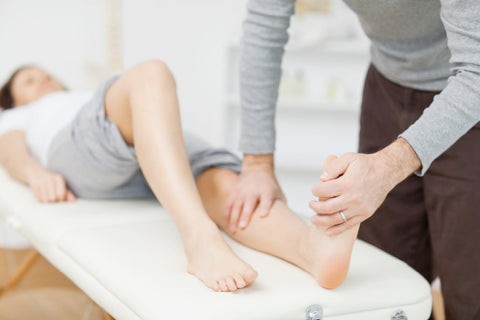 Countless individuals suffer from heel pain stemming from plantar fasciosis (or, as the condition is commonly mislabeled, plantar fasciitis). The agitating pain associated with this foot problem leaves many folks desperate for relief. Unfortunately, not all of the information about how to relieve plantar fascia pain is accurate or helpful. A lot of people, for example, have heard that stretching the plantar fascia (i.e., the bottom of the foot) is...
Read more
Countless individuals suffer from heel pain stemming from plantar fasciosis (or, as the condition is commonly mislabeled, plantar fasciitis). The agitating pain associated with this foot problem leaves many folks desperate for relief. Unfortunately, not all of the information about how to relieve plantar fascia pain is accurate or helpful. A lot of people, for example, have heard that stretching the plantar fascia (i.e., the bottom of the foot) is...
Read more




